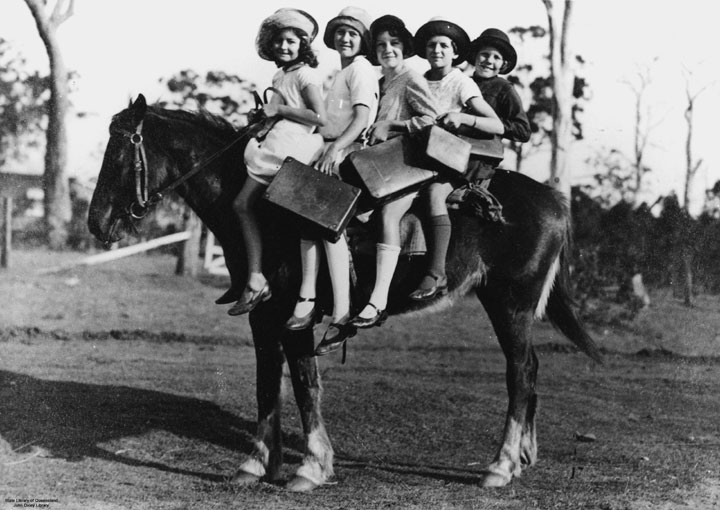 Riding a horse to school, 1928
Riding a horse to school, 1928
TLF ID R9657
This posed 1928 black-and-white photograph shows five girls on a horse on their way to the Glass Mountains State School, as it was known at the time, in Queensland. The girls are pressed together from the base of the horse's neck to its rump. They wear hats and hold their school cases. The horse has a bridle and one girl holds the reins. There appears to be a blanket in place of a saddle. Trees, a fence, a gate and a building can be seen in the background. The horse appears to be standing in the middle of a dirt road.
